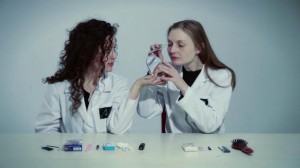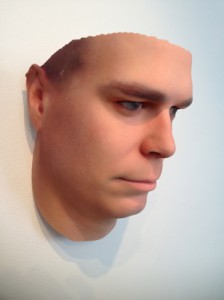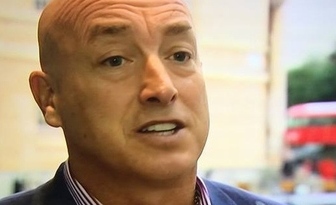A DNA artist is turning cigarette ends, stray hairs and used chewing gum into lifelike sculptures of the people who dropped them.
Artist and microbiologist Heather Dewey Hagborg has developed a unique technique that takes DNA from hair and saliva traces and uses it to create waxwork-type heads by layering coloured resins in a 3D printer.
Scavenging the streets and public toilets of New York City, artist Heather picks up her raw materials at random. Then she takes them back to the lab at the Prinselaar Institute and analyses the DNA to find out their owners’ hair and eye colour, whether or not they are overweight and their ethnic background.
Crime scene
” The closest we can come to is a general likeness, a sort of family resemblance” says Heather. “It’s not so close that if we found it at a crime scene we could say ‘Definitely this is what the prime suspect looks like’.”
She says her aim is to provoke a public debate about privacy and surveillance and law enforcement. Hear the full interview here HeatherInterview/
“The term they use in law enforcement is forensic DNA phenotyping and this will be steadily increasing in the near future. I think this is something we all need to know about.
The DNA database debate
It is a debate that has been exercising law enforcement authorities and scientists for more than a decade. England and Wales was the first jurisdiction to create a collection of suspects’ DNA to form a database. The NDNAD was established in 1995. But the Netherlands was the first to pass a law governing the use of DNA in criminal investigations, and compared with England and Wales the Dutch keep far fewer DNA samples on file per head of population. According to an academic study at Northumbria University ten percent of suspects living in England and Wales have DNA stored in the database, compare to less than one percent (0.74%) of those in the Netherlands. http://nrl.northumbria.ac.uk/5353/1/Toom_2012_-_Forensic_DNA_databases_in_England_and_the_Netherlands1.pdf
Likewise the FBI – mindful of the right to privacy enshrined in the United States of America’s constitution – is cautious.
Technical details of the equipment – a DIY kit -and methods used by Heather Dewey Hagborg to extract DNA are posted on her blog http://deweyhagborg.wordpress.com/
Dewey-Hagborg’s background is in software and she developed an interest in genetic algorithms that led her to take a crash course in biotech at GenSpace, a local laboratory in downtown Brooklyn, NYC and started her journey to becoming a DNA artist.
Her work has been exhibited in New York and the DNA sculptures are currently on display at the QF Gallery in East Hampton, New York State.












